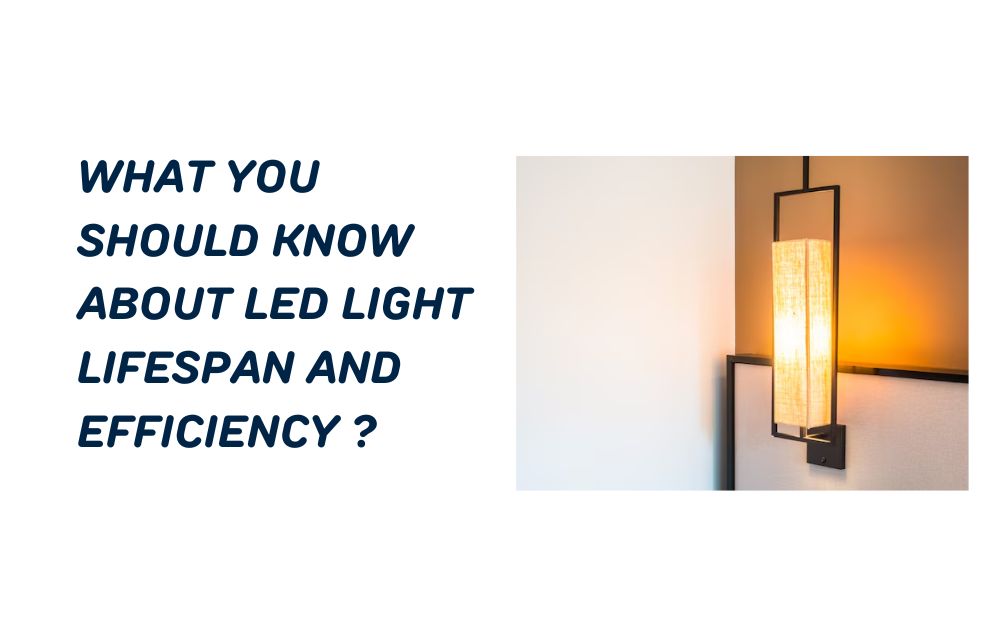LED (Light Emitting Diode) lights have transformed the way we light up our homes and businesses. They’re known for their energy efficiency and long lifespan, making them a popular choice for environmentally conscious consumers. If you’re considering switching to LED lights or want to understand more about their efficiency and longevity, this guide will help you make an informed decision.
Understanding LED Light Efficiency
LED lights are highly efficient compared to traditional incandescent and fluorescent bulbs. Here’s why:
How LED Lights Save Energy
LEDs produce light through a process that involves the movement of electrons in a semiconductor material. This process generates minimal heat, unlike incandescent bulbs that waste a lot of energy as heat. As a result, LEDs can convert more electricity into light, making them far more energy-efficient.
Energy Savings and Cost Benefits
One of the biggest advantages of LED lights is their ability to save on electricity bills. They consume significantly less energy to produce the same amount of light as traditional bulbs. Over time, this can lead to substantial cost savings, especially in larger installations or commercial settings.
Note:- When looking for dependable Led Light Suppliers in UAE, Al Arz Electrical is the place to go. Switch to LED lighting options that use less energy. For every type of renovation—home, office, or commercial—Al Arz Electrical offers a wide range of LED lights that ensure outstanding longevity, energy efficiency, and lighting performance.Check out our LED lighting options and learn more about how Al Arz Electrical can help you reduce your energy costs and improve your lighting environment by visiting our website.
Lifespan of LED Lights
LED lights are also prized for their longevity. Understanding their lifespan can help you plan for maintenance and replacement:
Average Lifespan of LEDs
Most LED lights have a lifespan of around 25,000 to 50,000 hours. To put this in perspective, if you use an LED bulb for 8 hours a day, it could last you around 10 years or more. This longevity far exceeds that of incandescent bulbs, which typically last around 1,000 hours, and even fluorescent bulbs, which last about 10,000 hours on average.
Factors Affecting LED Lifespan
Several factors can influence how long an LED light will last:
- Quality: Higher-quality LEDs often have better heat management systems and electronic components, which contribute to longer lifespans.
- Usage Patterns: LEDs used in environments with frequent on-off cycles or high temperatures may experience shorter lifespans.
- Environmental Conditions: Extreme temperatures and humidity can affect LED performance and longevity.
Choosing Energy-Efficient LEDs

When shopping for LEDs, consider these tips to ensure you’re getting the most efficient options:
Energy Star Certification
Look for LED lights with Energy Star certification. This label indicates that the product meets strict energy efficiency guidelines set by the EPA (Environmental Protection Agency). Energy Star-certified LEDs not only save energy but also meet high standards of performance and reliability.
Lumens and Watts
Instead of focusing on wattage (which indicates energy consumption in traditional bulbs), pay attention to lumens. Lumens measure the brightness of the light output. Higher lumens mean brighter light, so choose LEDs with the right lumens for your needs to maximize efficiency.
Color Temperature
LED lights come in different color temperatures, ranging from warm (soft white) to cool (daylight). Selecting the right color temperature can enhance the ambiance of your space while ensuring energy efficiency.
Long-Term Benefits of LED Lights
Investing in LED lights offers numerous long-term benefits:
- Lower Maintenance Costs: Due to their extended lifespan, LEDs require less frequent replacement, reducing maintenance expenses.
- Environmental Impact: LED lights help reduce carbon emissions due to their energy efficiency. They also contain no mercury, unlike fluorescent bulbs, making them safer for disposal and recycling.
Conclusion
LED lights represent a significant advancement in lighting technology, offering unparalleled efficiency and longevity. By understanding how LEDs save energy, their impressive lifespan, and how to choose the most efficient options, you can make informed decisions when upgrading your lighting. Whether for your home, office, or commercial space, LED lights provide not only cost savings but also environmental benefits that contribute to a sustainable future.
Note:- To read more articles visit on thataiblog.




